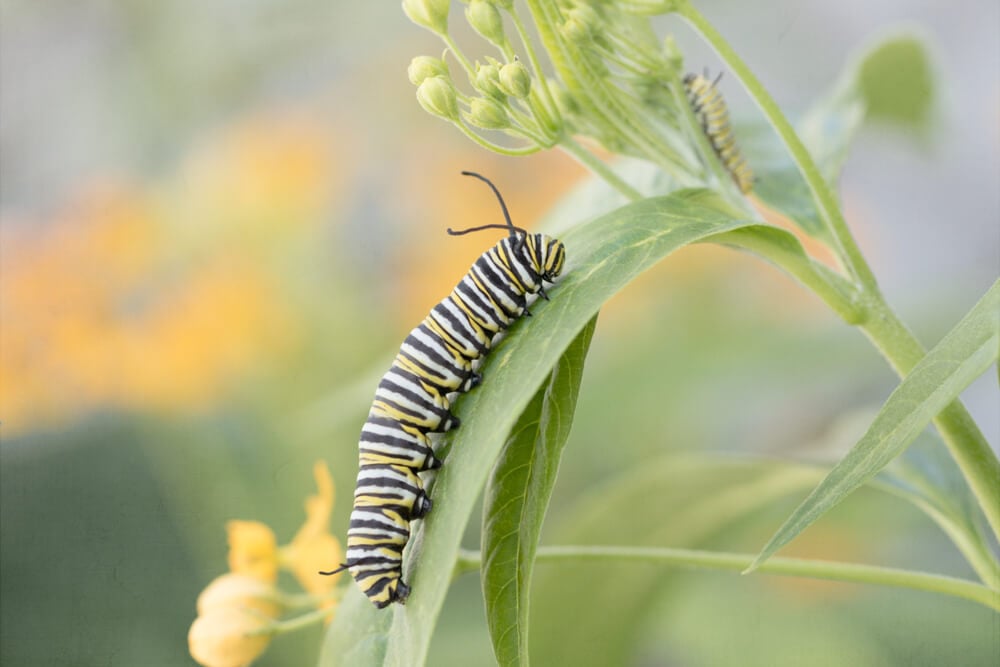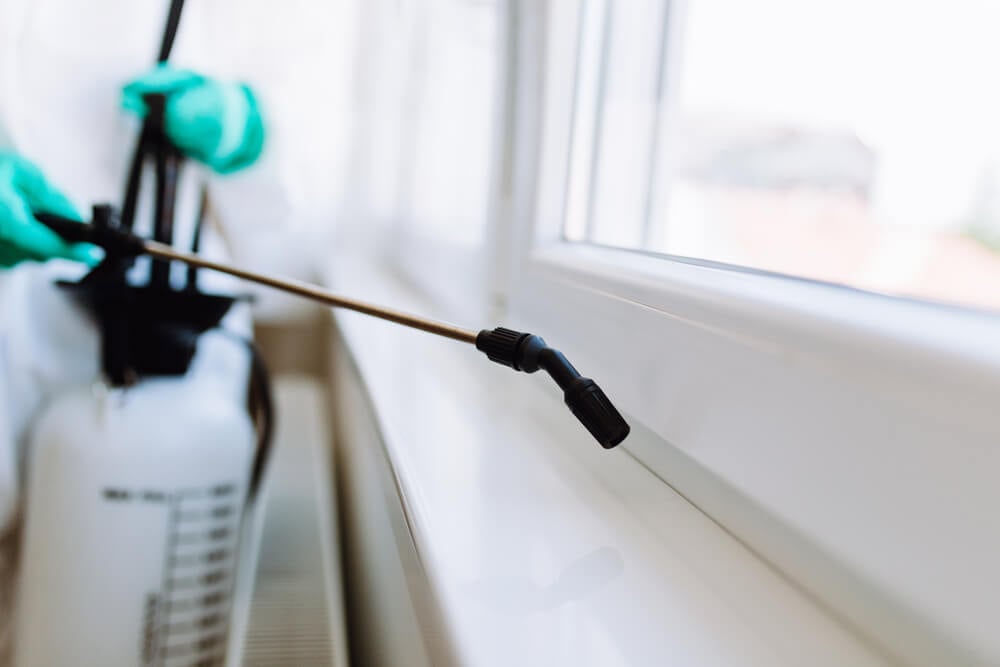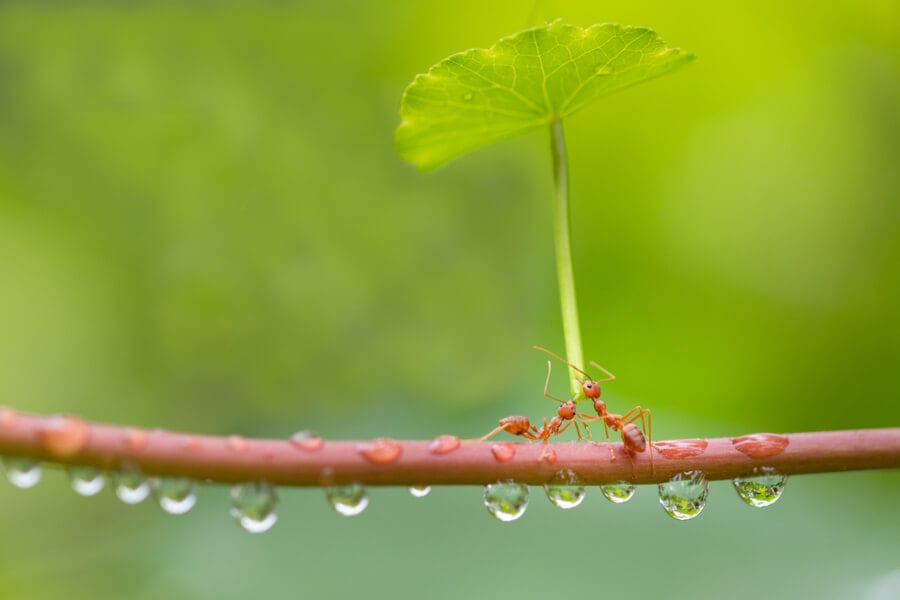What are caterpillars?
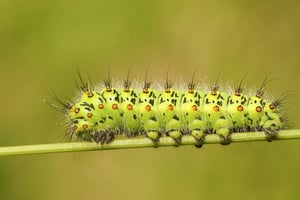 It’s easy to forget, but every caterpillar is the larval stage of some species of moth or butterfly. When caterpillars emerge from eggs planted by their adult moth or butterfly counterparts, they’re hungry. All the substantial eating moths or butterflies perform happens during the caterpillar stage. The larvae have to eat continuously to gather the energy they need to enter the pupal stage and metamorphosize. There are over 100,000 species of caterpillar, and they come in a wide variety of shapes, sizes, and colors.
Caterpillars grow very quickly, further necessitating their non-stop eating. To enter their pupal state, caterpillars have to molt 3-5 times. Caterpillars of virtually every species prefer to find their way and stay nearby. Common infestation sites include garden plants, trees, brush, stored food (especially grains), and fabrics. The stored food-infesting Indian meal moth and fabric-infesting webbing clothes moth caterpillars are particularly common indoor pests. Other caterpillar species may remain outdoors to feed on garden plants, particularly in warmer months.
It’s easy to forget, but every caterpillar is the larval stage of some species of moth or butterfly. When caterpillars emerge from eggs planted by their adult moth or butterfly counterparts, they’re hungry. All the substantial eating moths or butterflies perform happens during the caterpillar stage. The larvae have to eat continuously to gather the energy they need to enter the pupal stage and metamorphosize. There are over 100,000 species of caterpillar, and they come in a wide variety of shapes, sizes, and colors.
Caterpillars grow very quickly, further necessitating their non-stop eating. To enter their pupal state, caterpillars have to molt 3-5 times. Caterpillars of virtually every species prefer to find their way and stay nearby. Common infestation sites include garden plants, trees, brush, stored food (especially grains), and fabrics. The stored food-infesting Indian meal moth and fabric-infesting webbing clothes moth caterpillars are particularly common indoor pests. Other caterpillar species may remain outdoors to feed on garden plants, particularly in warmer months.
Why are caterpillars a problem?
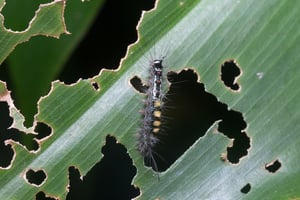 As you’ve no-doubt noticed, caterpillars are all about one thing: eating. Unfortunately, they’re often all about eating stuff you’d rather they didn’t. Like your clothes, your garden, or your food. Caterpillars use their mouthparts to chew small, oval-shaped holes in whatever they’re eating. They’ll eat for the entirety of their development, stopping only to molt so they can keep growing--and eating. To make matters worse, caterpillars leave behind waste, dead skin, and silk on their food as they work on it. It’s gross.
Caterpillars can easily ruin food or clothing surprisingly quickly. Caterpillars also grow and reproduce quickly, which means they can spread out to other food sources quickly, too. Moths often lay their eggs directly onto food sources, so their caterpillar offspring can begin eating immediately upon hatching. If you have a moth or caterpillar infestation, it’s important to look for eggs on possible food sources. Outside, caterpillars can damage plants by destroying leaves, which can affect a garden’s survival or long-term health.
As you’ve no-doubt noticed, caterpillars are all about one thing: eating. Unfortunately, they’re often all about eating stuff you’d rather they didn’t. Like your clothes, your garden, or your food. Caterpillars use their mouthparts to chew small, oval-shaped holes in whatever they’re eating. They’ll eat for the entirety of their development, stopping only to molt so they can keep growing--and eating. To make matters worse, caterpillars leave behind waste, dead skin, and silk on their food as they work on it. It’s gross.
Caterpillars can easily ruin food or clothing surprisingly quickly. Caterpillars also grow and reproduce quickly, which means they can spread out to other food sources quickly, too. Moths often lay their eggs directly onto food sources, so their caterpillar offspring can begin eating immediately upon hatching. If you have a moth or caterpillar infestation, it’s important to look for eggs on possible food sources. Outside, caterpillars can damage plants by destroying leaves, which can affect a garden’s survival or long-term health.
How do caterpillars get into your home?
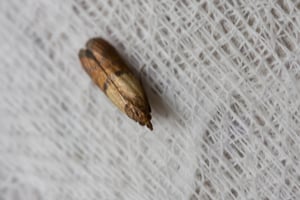 We have some bad news: the caterpillars inside your home were probably born there. A Caterpillar’s only interest is in getting to a food supply and feeding continuously until it can pupate. They don’t generally move far from where they were born, especially if there’s food nearby. Adult moths are similarly single-minded, but they have a different focus. Where caterpillars are all about eating, adult moths are all about reproducing.
If you see moths in or around your home, they’re looking for mates or a place to lay eggs. Adult moths don’t actually eat at all. You’ll still find them around the places where you’d think they eat, but not for the reasons you think. When moths cluster around your pantry or closet, it’s because they’re laying eggs. Moths lay their eggs as close to food as possible, so their offspring won’t have to move far to get to it. In other words: it’s not caterpillars you have to worry about keeping out, it’s moths.
We have some bad news: the caterpillars inside your home were probably born there. A Caterpillar’s only interest is in getting to a food supply and feeding continuously until it can pupate. They don’t generally move far from where they were born, especially if there’s food nearby. Adult moths are similarly single-minded, but they have a different focus. Where caterpillars are all about eating, adult moths are all about reproducing.
If you see moths in or around your home, they’re looking for mates or a place to lay eggs. Adult moths don’t actually eat at all. You’ll still find them around the places where you’d think they eat, but not for the reasons you think. When moths cluster around your pantry or closet, it’s because they’re laying eggs. Moths lay their eggs as close to food as possible, so their offspring won’t have to move far to get to it. In other words: it’s not caterpillars you have to worry about keeping out, it’s moths.
How can I keep caterpillars out?
 The best way to keep caterpillars out of your home is to keep them from hatching there. Wash and dry all your clothing about once a month--even if you don’t wear it. Vacuum your closet, wardrobe, or wherever else you keep clothing. Moths are attracted to sweat and other moisture, so keep dirty clothes in a sealed hamper until they’re washed. Keep clothing you don’t wear on a regular basis in sealed plastic hanging bags. Consider storing clothing like this in sealed plastic boxes, where it won’t be vulnerable to long-term infestation.
Pantry moths are attracted to easily-accessible food. They’ll lay eggs on fruits, grains, and all manner of other soft foods. Keep bread, cereal, pasta, and other grains in sealed plastic containers. Refrigerate fruit and keep it in plastic bags. Make sure you vacuum up crumbs regularly. Clean your pantry about once a month, and make sure you don’t leave food out in the open. If you deprive moths of what they need, they’ll go elsewhere to get it.
Caterpillars may look unusual or distressing, but really they’re just another pest larva. There’s no reason to panic if you have them; it just means you have to take some preventative measures. Hopefully, this info will be all you need to know to make your home a caterpillar munch-free zone.
In the off-chance you end up with a caterpillar infestation anyway, however, don’t despair. Just call Plunkett’s any time and we’ll be there to wipe out your problem and make sure it doesn’t happen again. Don’t waste time feeling paranoid about your clothes and food; just call today!
The best way to keep caterpillars out of your home is to keep them from hatching there. Wash and dry all your clothing about once a month--even if you don’t wear it. Vacuum your closet, wardrobe, or wherever else you keep clothing. Moths are attracted to sweat and other moisture, so keep dirty clothes in a sealed hamper until they’re washed. Keep clothing you don’t wear on a regular basis in sealed plastic hanging bags. Consider storing clothing like this in sealed plastic boxes, where it won’t be vulnerable to long-term infestation.
Pantry moths are attracted to easily-accessible food. They’ll lay eggs on fruits, grains, and all manner of other soft foods. Keep bread, cereal, pasta, and other grains in sealed plastic containers. Refrigerate fruit and keep it in plastic bags. Make sure you vacuum up crumbs regularly. Clean your pantry about once a month, and make sure you don’t leave food out in the open. If you deprive moths of what they need, they’ll go elsewhere to get it.
Caterpillars may look unusual or distressing, but really they’re just another pest larva. There’s no reason to panic if you have them; it just means you have to take some preventative measures. Hopefully, this info will be all you need to know to make your home a caterpillar munch-free zone.
In the off-chance you end up with a caterpillar infestation anyway, however, don’t despair. Just call Plunkett’s any time and we’ll be there to wipe out your problem and make sure it doesn’t happen again. Don’t waste time feeling paranoid about your clothes and food; just call today!

